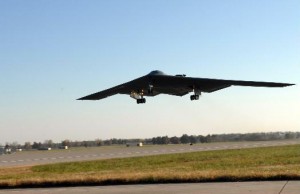 The Department of Defense could generate 7,000 megawatts (MW) of solar energy—equivalent to the output of seven nuclear power plants—on four military bases located in the California desert, according to a study released today by DoD’s Office of Installations and Environment. The year-long study, conducted by the consultancy ICF International, looked at seven military bases in California and two in Nevada. It finds that, even though 96 percent of the surface area of the nine bases is unsuited for solar development because of military use, endangered species and other factors, the solar-compatible area is nevertheless large enough to generate more than 30 times the electricity consumed by the California bases, or about 25 percent of the renewable energy that the State of California is requiring utilities to use by 2015.
The Department of Defense could generate 7,000 megawatts (MW) of solar energy—equivalent to the output of seven nuclear power plants—on four military bases located in the California desert, according to a study released today by DoD’s Office of Installations and Environment. The year-long study, conducted by the consultancy ICF International, looked at seven military bases in California and two in Nevada. It finds that, even though 96 percent of the surface area of the nine bases is unsuited for solar development because of military use, endangered species and other factors, the solar-compatible area is nevertheless large enough to generate more than 30 times the electricity consumed by the California bases, or about 25 percent of the renewable energy that the State of California is requiring utilities to use by 2015.
DoD is seeking to develop solar, wind, geothermal and other distributed energy sources on its bases both to reduce their $4 billion-a-year energy bill and to make them less dependent on the commercial electricity grid. Such on-site energy generation, together with energy storage and so-called smart-microgrid technology, would allow a military base to maintain its critical operations “off-grid” for weeks or months if the grid is disrupted.
The ICF study looks in detail at the seven DoD installations that are located in California’s Mojave and Colorado deserts: Fort Irwin, Naval Air Weapons Station China Lake, the Marine Corps’ Chocolate Mountain Aerial Gunnery Range, Edwards Air Force Base, Marine Corps Logistics Base Barstow, Marine Corps Air Ground Combat Center Twentynine Palms and Naval Air Facility El Centro. The study also looks at two Air Force bases located in the Nevada desert, Creech and Nellis. Read the full report: Executive Summary – Solar Energy Development


